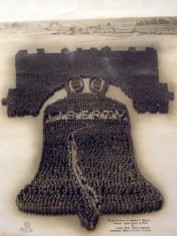
Mole & Thomas
The Human Liberty Bell
1918
Vintage Silver Gelatin Print
MPH 48
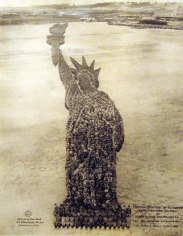
Mole & Thomas
Human Statue of Liberty, c. 1918
Vintage Silver Gelatin Print
MPH 56
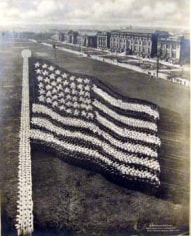
Mayhart Studio Chicago
A Living Flag, 1917
Vintage Silver Gelatin Print
MPH 64

Mole & Thomas
The Human U. S. Shield
1918
Vintage Silver Gelatin Print
MPH 63
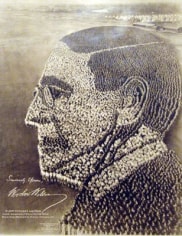
Mole & Thomas
Living Portrait of Woodrow Wilson, 1918
Vintage Silver Gelatin Print
MPH 46
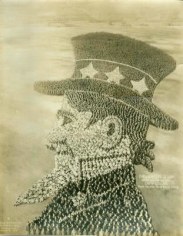
Mole & Thomas
The Living Uncle Sam
1919
Vintage Silver Gelatin Print
MPH 67
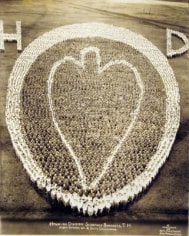
E. O. Goldbeck
Hawaiian Division–Scho field Barracks, T. H.
Major General WM. R. Smith, 1926
Vintage Silver Gelatin Print
MPH 45
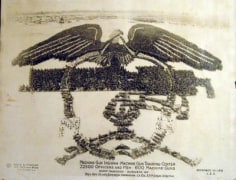
Mole & Thomas
Machine Gun Insignia–Machine Gun Training Center, 1918
Vintage Silver Gelatin Print
MPH 47
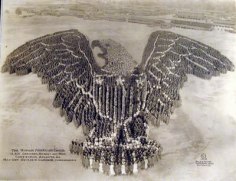
Mole & Thomas
The Human American Eagle
1918
Vintage Silver Gelatin Print
MPH 49
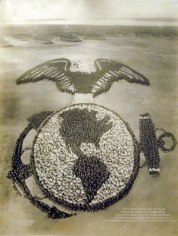
Mole & Thomas
Living Emblem of the United States Marines
1919
Vintage Silver Gelatin Print
MPH 50
Mole & Thomas
Living Insignia of the 27th Division
1919
Vintage Silver Gelatin Print
MPH 51
Photographer Unknown
Entire Personnel 1st Division
Formed a Living Insignia
1940
Vintage Silver Gelatin Print
MPH 52
Photographer Unknown
Grenzhausen, Germany
1st Field Artillery Brigade 1stDivision
1919
Vintage Silver Gelatin Print
MPH 53
Newman Photo
Animated Crest 34th Division
Camp Cody, New Mexico, 1918
Vintage Silver Gelatin Print
MPH 54
Photo Emblem Co.
The Panther Formed by the Faculty and Students of
University of Pittsburgh, 1920
Black & White Photograph
MPH 55
E. H. Morrison
OfficialSealofthe11thDivision, c. 1918
Vintage Silver Gelatin Print
MPH 57
Photographer Unknown
209th Engineers, Camp Sheridan, ALA
1919
Vintage Silver Gelatin Print
MPH 58
Photographer Unknown
S.
Late 19th, Early 20th Century
Vintage Silver Gelatin Print
MPH 59
Photographer Unknown
F.
Late 19th, Early 20th Century
Vintage Silver Gelatin Print
MPH 60
Photographer Unknown
Living Flag
1920
Vintage Silver Gelatin Print
5 x 7 inches
MPH 61
Arthur Samuel Mole (January 7, 1889, in Lexden, Essex, England – 14 August 1983 in Fort Lauderdale, Florida, US) was a British-born, naturalized American commercial photographer. He became famous for a series of "living photographs" made during World War I, in which tens of thousands of soldiers, reservists and other members of the military were arranged to form massive compositions. Although if viewed from the ground or from directly above, these masses of men would appear meaningless, when seen from the top of an 80-foot viewing tower, they clearly appeared to be various patriotic shapes. The key was to photograph the people from the one place where the lines of perspective would resolve themselves into intelligible images. His partner in this endeavor was John D. Thomas.
Mole immigrated to the United States with his family in 1902, when he was 13 years old. He worked as a commercial photographer in Zion, Illinois, north of Chicago. During World War I, he traveled to various Army, Marine and Navy camps to execute his massive compositions. He is considered a pioneer in the field of performed group photography. Executing photographs using such large numbers, and relying on lines of perspective stretching out more than a hundred meters, required a week of preparation and then hours to actually position the formations. Mole would stand on his viewing tower and shout into a megaphone or use a long pole with a white flag to arrange the tens of thousands of soldiers into position.
Ten images are most famous from this period. They include images of Woodrow Wilson, the Liberty Bell, Statue of Liberty, an American eagle as well as emblems of the YMCA and the Allied flags. The Human U.S. Shield required the placement of 30,000 people; The Liberty Bell 25,000.
Mole's work is featured in the collections of the Chicago Historical Society, Metropolitan Museum of Art, San Francisco Museum of Modern Art, and the Library of Congress. The photographs were again presented to the public in the July 2007 issue of Martha Stewart Living. Eight of the images are displayed in a feature article. Furthermore, his technique lives on in a contemporary military public relations context.









